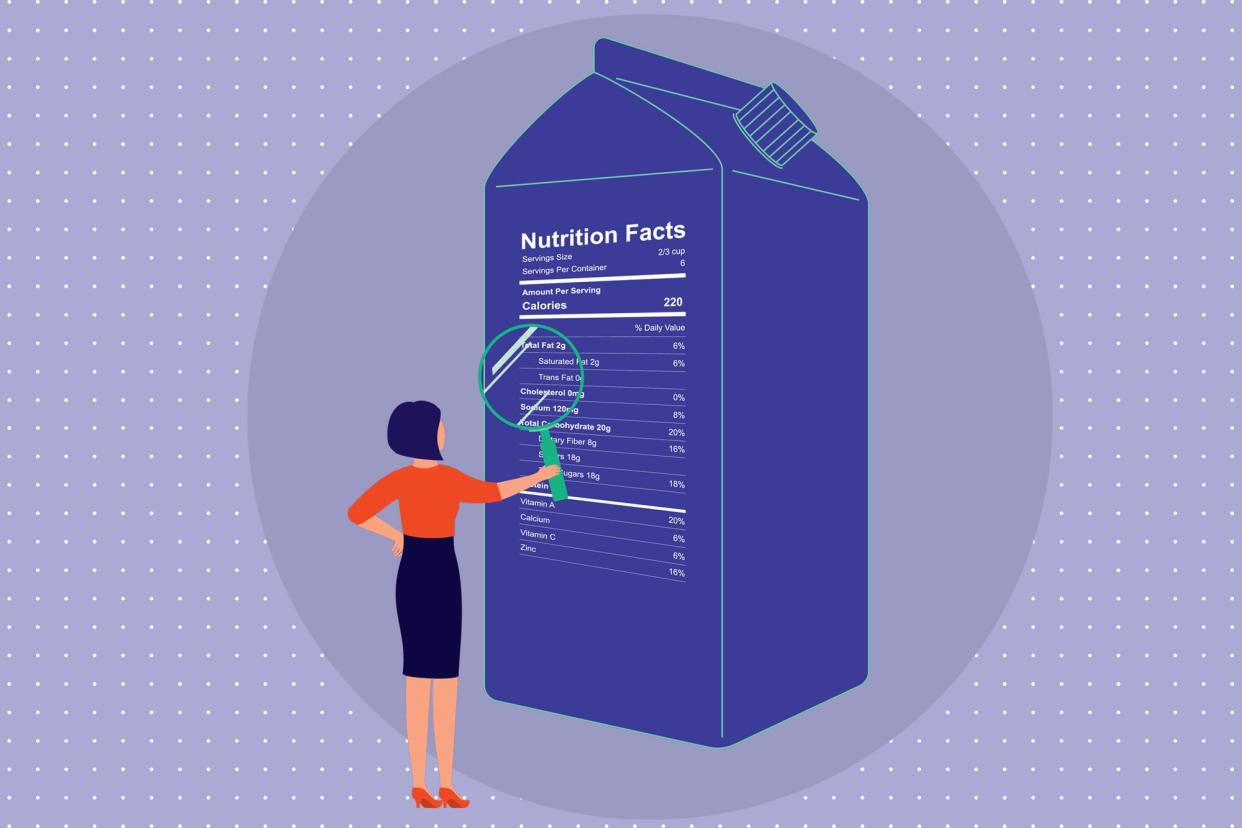The FDA Wants to Update the Definition for "Healthy" Claims on Food Labels

Getty Images
A new Food and Drug Administration proposed rule, "Food Labeling: Nutrient Content Claims; Definition of Term Healthy," released on September 28, would offer new guidance to brands who label their products as "healthy" options. The FDA is looking to regulate the use of the word because of the rise of diet-related illnesses in the U.S.
"In the current marketplace, about 5 percent of all packaged foods are labeled as 'healthy,'" the FDA writes in the proposal. "Because nutrition science has evolved over time, updating the definition of the implied nutrient content claim 'healthy' to closely align with nutrition science underpinning the Dietary Guidelines, 2020-2025 will better inform consumers who are selecting those products to choose a more healthful diet, which may result in lower incidence of diet-related chronic diseases, including cardiovascular disease and type 2 diabetes."
So what does this mean? Let's say you're walking down the cereal aisle in the grocery store. Dozens of products have the word "healthy" stamped on their boxes in bold lettering, based on their nutrition claims, whether that be no cholesterol or that it's multi-grain. That's no longer enough, according to the FDA. If the proposal becomes an official rule, the cereal would have to have a certain amount of whole grains as well as low counts of saturated fats, sodium and added sugars. If it meets the quality standards, the cereal would then be allowed to have an official FDA-approved "healthy" marker.
Nuts and seeds, fatty fish such as salmon, certain oils and water are currently categories of food that would not be able to be labeled as healthy with this proposed definition. But the FDA notes that these products can be part of a healthy dietary pattern and therefore can still qualify to be labeled as "healthy."
"Providing informative and accessible food labeling empowers consumers and may help foster a healthier food supply for all if some manufacturers include more fruits, vegetables, dairy and whole grains and limit saturated fat, sodium and added sugars in their products, to qualify to use the updated claim," the FDA writes in a release about the proposal.
While the update on healthy labeling is currently just a proposal—a 90-day public-comment period is ongoing—and not yet in effect, the proposed guidelines are in line with EatingWell's parameters for a diabetes-friendly eating pattern. We're hoping that if healthy labeling becomes regulated, it will give more clarity to grocery shoppers, especially those following condition-specific diets.
Related: 10 Best Foods for Diabetes

